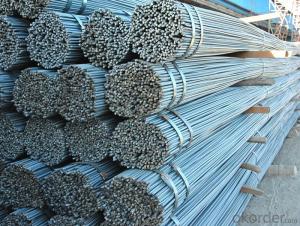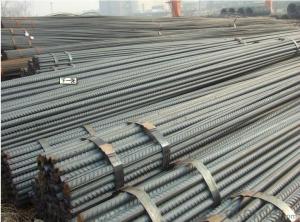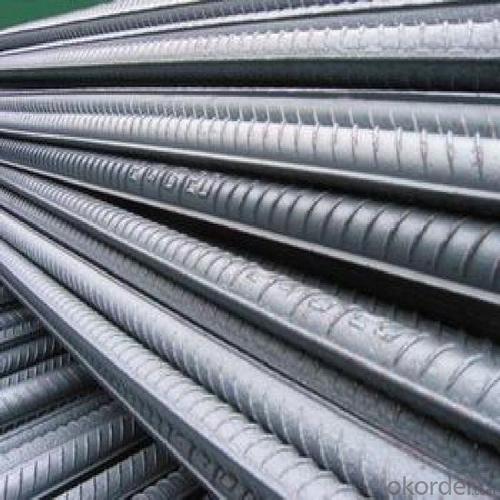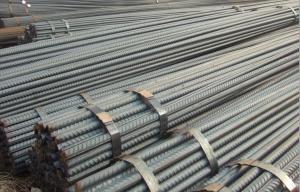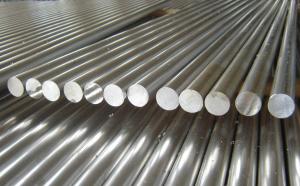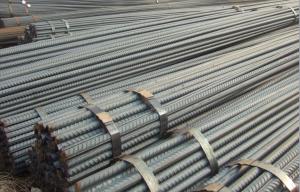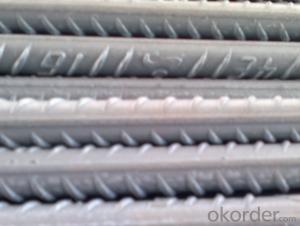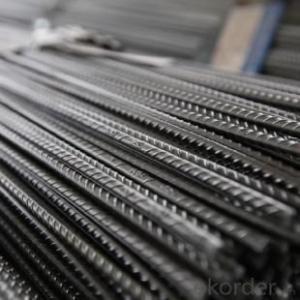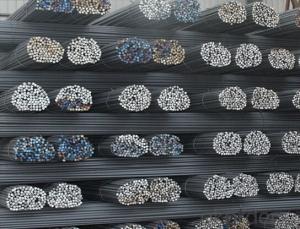Deformed Bar BS4449-1997/2009 or GB HRB400 6MM-50MM
- Loading Port:
- China Main Port
- Payment Terms:
- TT or LC
- Min Order Qty:
- -
- Supply Capability:
- -
OKorder Service Pledge
OKorder Financial Service
You Might Also Like
Product Description:
OKorder is offering high quality Deformed Bar BS4449-1997/2009 or GB HRB400 6MM-50MMat great prices with worldwide shipping. Our supplier is a world-class manufacturer of steel, with our products utilized the world over. OKorder annually supplies products to European, North American and Asian markets. We provide quotations within 24 hours of receiving an inquiry and guarantee competitive prices.
Product Applications:
Deformed bar is widely used in buildings, bridges, roads and other engineering construction. Big to highways, railways, bridges, culverts, tunnels, public facilities such as flood control, dam, small to housing construction, beam, column, wall and the foundation of the plate, deformed bar is an integral structure material. With the development of world economy and the vigorous development of infrastructure construction, real estate, the demand for deformed bar will be larger and larger
Product Advantages:
OKorder's Deformed Bar BS4449-1997/2009 or GB HRB400 6MM-50MMare durable, strong, and resist corrosion, exact size, regular package, chemical and mechanical properties are stable.
Main Product Features:
· Premium quality
· Prompt delivery & seaworthy packing (30 days after receiving deposit)
· Corrosion resistance
· Can be recycled and reused
· Mill test certification
· Professional Service
· Competitive pricing
Product Specifications:
Manufacture: Hot rolled
Grade: BS4449
Certificates: ISO, SGS, BV, CIQ
Diameter: 6mm,8mm,10mm,12mm,14mm,16mm,18mm,20mm,
22mm,25mm,28mm,32mm,36mm,40mm,50mm
Length: 6M, 9M,12M or as required
Packaging: Export packing, nude packing, bundled
Chemical Composition: (Please kindly find our chemistry of our material based on HRB500 as below for your information)
Grade | Technical data of the original chemical composition (%) | ||||||
C | Mn | Si | S | P | V | ||
HRB400 | ≤0.25 | ≤1.60 | ≤0.80 | ≤0.045 | ≤0.045 | 0.04-0.12 | |
Physical capability | |||||||
Yield Strength (N/cm²) | Tensile Strength (N/cm²) | Elongation (%) | |||||
≥400 | ≥570 | ≥14 | |||||
Theoretical weight and section area of each diameter as below for your information:
Diameter(mm) | Section area (mm²) | Mass(kg/m) | Weight of 12m bar(kg) |
6 | 28.27 | 0.222 | 2.664 |
8 | 50.27 | 0.395 | 4.74 |
10 | 78.54 | 0.617 | 7.404 |
12 | 113.1 | 0.888 | 10.656 |
14 | 153.9 | 1.21 | 14.52 |
16 | 201.1 | 1.58 | 18.96 |
18 | 254.5 | 2.00 | 24 |
20 | 314.2 | 2.47 | 29.64 |
22 | 380.1 | 2.98 | 35.76 |
25 | 490.9 | 3.85 | 46.2 |
28 | 615.8 | 4.83 | 57.96 |
32 | 804.2 | 6.31 | 75.72 |
36 | 1018 | 7.99 | 98.88 |
40 | 1257 | 9.87 | 118.44 |
50 | 1964 | 15.42 | 185.04 |
FAQ:
Q1: Why buy Materials & Equipment from OKorder.com?
A1: All products offered byOKorder.com are carefully selected from China's most reliable manufacturing enterprises. Through its ISO certifications, OKorder.com adheres to the highest standards and a commitment to supply chain safety and customer satisfaction.
Q2: How do we guarantee the quality of our products?
A2: We have established an advanced quality management system which conducts strict quality tests at every step, from raw materials to the final product. At the same time, we provide extensive follow-up service assurances as required.
Q3: How soon can we receive the product after purchase?
A3: Within three days of placing an order, we will begin production. The specific shipping date is dependent upon international and government factors, but is typically 7 to 10 workdays.
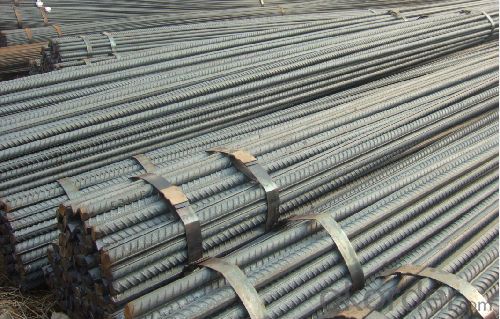
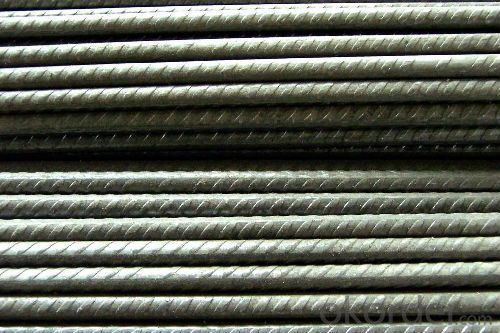
- Q: Can steel rebars be used in the construction of shopping centers?
- Yes, steel rebars can be used in the construction of shopping centers. Steel rebars, also known as reinforcing bars, are commonly used in the construction industry to reinforce concrete structures. Shopping centers often require strong, durable, and long-lasting infrastructure, and steel rebars provide the necessary strength and reinforcement to support the weight and load of the building. They help to prevent cracks, increase structural stability, and enhance the overall durability of the construction. Additionally, steel rebars can be easily shaped and cut to fit the specific design requirements of a shopping center, making them a versatile and practical choice for construction projects.
- Q: How are steel rebars bent or shaped to fit specific construction requirements?
- Rebar bending, a commonly used technique in construction, involves shaping steel rebars to meet specific requirements. This process utilizes specialized machines that exert force on the rebars, causing them to bend or conform to desired specifications. The method employed for bending steel rebars varies depending on the complexity of the desired shape. For simpler bends, such as 90-degree angles, manual tools like hammers or manual rebar benders can be utilized. These tools allow construction workers to manually apply force and shape the rebars by hand. However, for more intricate shapes or larger quantities of rebars, mechanical rebar benders are preferred. These machines are equipped with bending dies and rollers that provide greater precision and efficiency in bending the steel rebars. Depending on the size and requirements of the construction project, these machines can be operated manually or powered by hydraulics or electricity. In certain cases, Computer Numerical Control (CNC) machines are employed, particularly for projects with complex or customized rebar shapes. These machines are programmed to automatically bend the rebars to desired angles and shapes, ensuring high levels of precision and accuracy in the construction process. It is important to note that rebar bending extends beyond simple bends or shapes. Some architectural or structural requirements call for curved or spiraled rebars. In such instances, specialized bending machines are used to gradually and precisely apply controlled force to the rebars, resulting in smooth curves or spirals. In summary, the process of bending or shaping steel rebars to meet specific construction requirements involves the use of manual tools, mechanical benders, or CNC machines. These methods guarantee precise bending and shaping of the rebars according to design specifications, facilitating efficient and accurate construction of reinforced concrete structures.
- Q: What are the different types of surface finishes available for steel rebars?
- There are several different types of surface finishes available for steel rebars, each with its own unique characteristics and advantages. Here are some of the most common types: 1. Black/Uncoated Finish: This is the most basic type of surface finish for steel rebars. It involves leaving the rebar in its natural state without any additional coating or treatment. While it provides no corrosion protection, it is often used in applications where the rebar will be encased in concrete. 2. Epoxy-Coated Finish: In this type of finish, a layer of epoxy coating is applied to the surface of the rebar. This coating provides excellent corrosion resistance and helps to extend the lifespan of the rebar. Epoxy-coated rebars are commonly used in marine environments or in structures exposed to harsh weather conditions. 3. Galvanized Finish: Galvanizing involves applying a layer of zinc coating to the surface of the rebar. This coating acts as a barrier against corrosion and provides long-lasting protection. Galvanized rebars are commonly used in areas with high moisture content or in structures exposed to corrosive chemicals. 4. Stainless Steel Finish: Stainless steel rebars are made from a corrosion-resistant alloy that contains a high percentage of chromium. This type of finish is highly resistant to corrosion, even in harsh environments. Stainless steel rebars are typically used in structures where long-term durability is essential, such as in bridges and parking garages. 5. Ribbed Finish: Ribbing refers to the pattern or texture that is added to the surface of the rebar. This type of finish improves the bond strength between the rebar and the surrounding concrete, enhancing the structural integrity of the construction. Ribbed finishes are commonly used in reinforced concrete structures. It is important to consider the specific requirements of your project when selecting a surface finish for steel rebars. Factors such as environmental conditions, exposure to moisture or chemicals, and the desired lifespan of the structure will all influence the choice of surface finish. Consulting with a structural engineer or construction professional can help determine the most suitable finish for your particular application.
- Q: How do steel rebars affect the maintenance requirements of a structure?
- Steel rebars, also known as reinforcing bars, play a significant role in the maintenance requirements of a structure. These bars, made of steel, are embedded within concrete to provide strength and durability to the structure. One of the primary ways steel rebars affect maintenance is by enhancing the overall structural integrity of a building or infrastructure. The presence of rebars significantly increases the load-bearing capacity of concrete, allowing it to withstand external forces such as wind, earthquakes, and heavy loads. This reinforcement helps prevent cracks, deformations, and structural failures, ultimately reducing the maintenance needs of a structure. Furthermore, steel rebars also contribute to the longevity of a structure. By providing tensile strength to concrete, they protect it from the effects of shrinkage and expansion caused by temperature fluctuations. These rebars act as a framework that holds the concrete together, minimizing the risk of cracks and ensuring the structural stability of the building over time. Consequently, the maintenance requirements are reduced as the structure remains intact and resilient against environmental factors. However, it is important to note that steel rebars can also influence maintenance requirements in certain circumstances. If the rebars are not properly designed, installed, or protected, they can be susceptible to corrosion. Corrosion occurs when moisture and oxygen penetrate the concrete and reach the steel, causing it to rust. Rusting rebars can lead to the expansion of steel, creating internal pressure that can result in cracking and spalling of the concrete. Thus, regular inspections, maintenance, and protection measures such as epoxy coating or cathodic protection systems are necessary to prevent corrosion and ensure the longevity of the structure. In conclusion, steel rebars positively impact the maintenance requirements of a structure by enhancing its strength, durability, and longevity. They reduce the need for repairs and maintenance caused by structural failures and increase the overall resilience against external forces. However, proper design, installation, and protection of rebars are crucial to avoid corrosion-related issues that could increase maintenance needs.
- Q: What is the impact strength of steel rebars?
- The impact strength of steel rebars can vary depending on several factors such as the composition of the steel, the manufacturing process, and the specific grade of the rebar. However, in general, steel rebars are known for their high impact strength. This means that they are able to withstand significant forces and impacts without fracturing or breaking. Steel rebars are commonly used in construction projects to reinforce concrete structures and provide additional strength. Their high impact strength allows them to withstand heavy loads, vibrations, and even extreme weather conditions. The impact strength of steel rebars is crucial in ensuring the structural integrity and safety of buildings and infrastructure. They play a critical role in preventing buildings from collapsing under stress, such as earthquakes or heavy loads. Additionally, steel rebars can absorb and distribute the impact energy throughout the structure, reducing the likelihood of localized damage. Overall, the impact strength of steel rebars is a key factor in determining their suitability for various applications in construction. Engineers and architects carefully consider this property when selecting the appropriate grade and size of steel rebars to ensure the durability and safety of the structures they design.
- Q: What are the precautions to be taken while welding steel rebars?
- When welding steel rebars, there are several precautions that need to be taken. First and foremost, it is crucial to wear appropriate personal protective equipment such as a welding helmet, gloves, and a protective apron to shield against sparks, heat, and UV radiation. Additionally, proper ventilation in the work area is necessary to prevent the accumulation of harmful fumes and gases. It is important to ensure that the rebar is clean and free from any contaminants or coatings that could affect the quality of the weld. Welding should only be performed by trained and qualified individuals who understand the specific techniques and settings required for welding rebars. Finally, regular inspections of the welds should be conducted to ensure their integrity and strength.
- Q: How do steel rebars contribute to the overall structural integrity of a building?
- Steel rebars, also known as reinforcement bars, play a crucial role in enhancing the overall structural integrity of a building. They are embedded within concrete structures to provide tensile strength, which complements the compressive strength of the concrete. By resisting tension forces, steel rebars help prevent cracks and failure in the concrete, ensuring the structural stability and durability of the building.
- Q: Laiwu steel thread steel trademark color blue and red Qu Qu
- In the purchase of rebar, first of all, from the surface quality, the surface of normal steel without cracks, scarring and folding. The surface shall have a bump, but shall not exceed the height of the cross rib, and shall also have a quality grade mark on the surface of the steel bar. Inferior thread steel due to rolling with adobe, its surface quality is poor, often with burrs, burrs, cracks, scarring, some distortions obvious, end of irregular, and even cracks. At the same time, some small mill due to heating temperature and rolling speed is not enough, the surface color is red, uneven color. Second, from the appearance of size, you can use vernier caliper to measure whether the actual size is consistent with the marked size (general thread steel rolled with specifications), if there is a difference in the standard deviation (such as? 16 the standard diameter of the thread steel is 15.4 + 0.4mm, while the quality of the false thread steel is mostly about 13mm. Third, regular steel at the factory, mostly large bundles of packaging, bundles of steel are linked with the physical corresponding metal signs, indicating the factory name, steel number, batch number, specifications and inspection code. But shoddy steel due to poor production conditions, no large hoisting equipment, mostly small (about ten strapping) package or in bulk, no metal signs, no guarantee of quality.
- Q: What is the effect of aging on the properties of steel rebars?
- The effect of aging on the properties of steel rebars is generally negative. Over time, steel rebars may experience gradual deterioration due to factors such as corrosion, fatigue, and stress. This can lead to a reduction in their structural integrity and load-bearing capacity. Aging can also cause an increase in brittleness, making rebars more prone to fractures and failures. Therefore, regular inspections, maintenance, and potentially replacement of aged rebars are crucial to ensure the safety and longevity of structures.
- Q: Can steel rebars be used in dam construction projects?
- Certainly, steel rebars can be utilized in dam construction projects without a doubt. In the construction industry, steel rebars are commonly employed for reinforcing concrete structures, and dams are no exception to this rule. To enhance the tensile strength of concrete, the rebars are embedded within it, thereby rendering it more resistant to cracking and structural failure. Dams, being colossal structures engineered to withhold water, necessitate a high level of strength and durability to withstand the tremendous forces and pressures exerted by the water. By providing the required reinforcement, steel rebars ensure the dam's structural integrity. Moreover, steel rebars possess corrosion-resistant properties, which are of utmost significance in dam construction, where constant exposure to water occurs. All in all, the utilization of steel rebars in dam construction projects is a well-established and vital practice.
Send your message to us
Deformed Bar BS4449-1997/2009 or GB HRB400 6MM-50MM
- Loading Port:
- China Main Port
- Payment Terms:
- TT or LC
- Min Order Qty:
- -
- Supply Capability:
- -
OKorder Service Pledge
OKorder Financial Service
Similar products
Hot products
Hot Searches
Related keywords

